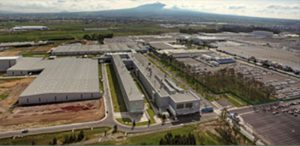
Amazingly, Mexico has captured nine out of the last 11 announced new automotive assembly plants in North America since 2010. The South landed the other two. The Center for Automotive Research (CAR) estimates that light vehicle production in Mexico will top 5 million units by the end of the decade. As late as 2013, Mexico produced only 1.7 million units, and last year about 3.5 million vehicles were assembled there. But the new factories in Mexico that are not operating as of yet — including plants by BMW, Nissan/Daimler, Kia, Toyota, Ford and Audi — are expected to boost vehicle production dramatically in the next few years.
Last year, the U.S. (the Midwest and the South) produced about 12 million units. In Canada, where the automotive industry is declining, only a little more than 2 million cars were built in 2015.
According to CAR, the U.S. and the Southern Auto Corridor are not losing existing production to Mexico like some other countries. Major assembly plants announced in Mexico have come at the expense of plant closures in countries such as Germany and Japan. Yet, there is no question that the South has lost out on the economic growth of new assembly plants it would have captured had they not been built in Mexico.
The benefits of making cars in Mexico aren’t numerous. It costs about $1,200 a vehicle less overall to make an automobile in Mexico as opposed to the U.S., according to CAR. More importantly for automakers, Mexico has the export benefits of more than 40 different free trade agreements with other nations, more than double the free trade agreements the U.S. has with other countries. President Obama’s campaigns for FTAs with Europe and Asia are still pending. All the while, Mexico has tariff-free access to almost 50 percent of the global new vehicle market, by far the biggest attraction for automakers.
For automakers and suppliers, there are issues with operating in Mexico. The port system in the country is underdeveloped, and much of the steel produced in Mexico is not automotive grade, meaning about 90 percent of the steel the country uses for the production of automobiles each year is imported from the U.S.
Importing to and exporting from Mexico takes about twice as long as in the U.S., raising distribution costs roughly 40 percent higher. Also, the business costs of crime and corruption in Mexico are about 50 percent higher than in the U.S., but that has not reduced investments in the country from automakers. They simply add that cost into their budgets. Also, energy costs, specifically those tied to the cost of electricity loads at OEM and parts plants, is higher in Mexico.
There is no question that new OEM activity in Mexico the last five years has been much stronger than here in the Southern Auto Corridor. However, OEM expansions are actually more numerous here in the South than in Mexico. Since the end of the recession all but two of the 17 major assembly plants in the Southern Automotive Corridor have expanded, four facilities more than twice.
The auto parts supply chain is also much stronger in the U.S. than in Mexico. CAR estimates that vehicles produced in Mexico “may be comprised of up to 40 percent U.S. content.” Furthermore, according to Michigan-based CAR, parts makers invested $3.4 billion in the last 10 years in Mexico compared to over $44 billion invested in the U.S. during the same timeframe. In Canada, parts manufacturers invested just $580 million since 2006.
In total, from the end of the recession through 2015, the auto industry as a whole – including OEMs – invested $80.7 billion in U.S. operations compared to $25.8 billion in Mexico.










